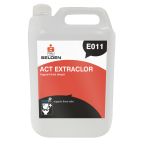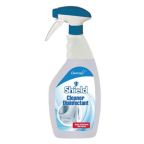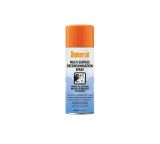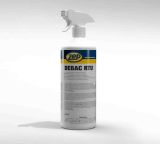Disinfectants & Sanitisers
Disinfectants and sanitisers are both used to remove germs from surfaces or objects and these terms are often used interchangeably. There are key differences between them, however, which should be understood to ensure you are purchasing the right product.
What are the differences between them?
A disinfectant is a chemically strong product used for the purpose of cleaning an area clear of any germs, bacterium or virus. They contain chemicals like hydrogen peroxide, which decontaminates a surface by attacking cell components, therefore removing the potential dangers of bacteria and viruses.
Sanitisers, like chlorine-based products, reduce the number of germs on a surface. It may not completely kill all the bacteria present but helps prevent the spread of illness by lowering the total number of germs and keeping it below the dose of exposure required to contract an illness.
Sanitisers work quicker than disinfectants, with sanitisers working almost immediately compared to up to ten minutes for disinfectants.
How do they work?
A disinfectant works by introducing high concentrates of chemical to the desired area. These chemicals may have a specific influence to kill certain types of micro-organisms, whereas others may be designed to target a smaller, specific range of diseases.
Features and benefits:
- Can be liquid or air-based sprays (great dispersal rates and coverage)
- Can be used to fill hand pumps and dispensers
- Add to water to clean floors/surfaces (varies between different chemicals)
- Most work with human contact (check leaflets with product)
Where might I use disinfectants or sanitisers?
- In your home, specifically in the kitchen, bathroom, or any high traffic areas
- Your workplace kitchen, your desk or appliances such as computer mice, telephones and laptops
- In schools or hospitals where cleanliness is paramount
7 Products showing for Disinfectants & Sanitisers
Related links
- Sanitiser Disinfectant Spray 500 ml Aerosol Disinfectant & Sanitiser
- DEBAC RTU 1 L Pump Spray Disinfectant & Sanitiser
- Hand Sanitisers
- Act Extraclor 5L Can Disinfectant & Sanitiser
- RawlPlug 400 ml Bottle Disinfectant & Sanitiser
- Shield 750 ml Pump Spray Disinfectant Cleaner
- 500 ml Disinfectant Cleaner
- 400 ml Aerosol Disinfectant






